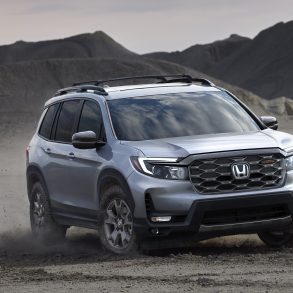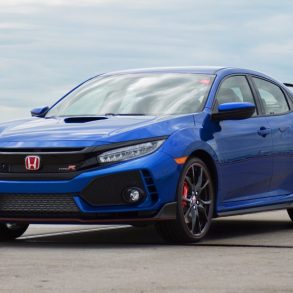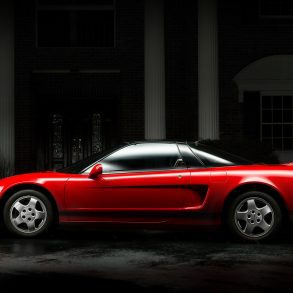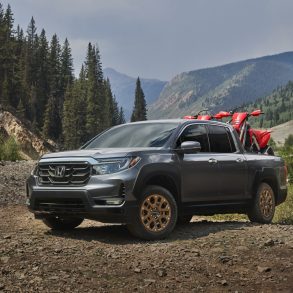Some people ask me questions about car-buying decisions. Seems like a good idea to check with the informants and the addicts. I am obliged, regardless of the type of vehicle we’re discussing or the type of person I’m discussing with, to mention horsepower. And there is a certain percentage of these people that say, “Oh I don’t care about horsepower. Doesn’t matter to me.”
Pause for a few minutes and take a deep breath. Collect yourselves. The Good Car Nation is frightened by such ignorance of appaloosas and arabians and clydesdales and palaminos and mustangs. Breathe deep. We did not all enter this posting realizing that there are people, car driving people, who do not care for horsepower. Or torque.
Oh let me tell you – they enjoy it when they feel the horses pulling. They hate it when not all horses are responding adequately. But they say, “How many cupholders does it have?”, and “Is there an extra cubic foot of trunk room in the other one?”
Horsepower affects us all. For those of you who are reading and feel that strongly about cupholders and that, umm, weakly about horsepower, just keep reading.
Horsepower manifests itself differently in every automobile. Even the same engine can feel different in different cars simply because of power-to-weight ratios. Putting a few dozen horsepower in a smart fortwo is relatively sufficient. The same engine in a Honda Civic would feel lifeless and in any Buick would be already pronounced dead.
Take an engine with similar statistics and you can still have remarkably different automobiles. Two prime examples are the Honda Civic Si and the Volkswagen GTI – a Rabbit to us, a Golf to others.
GTI – 200 horsepower. Civic Si – 197. We’ll call it even. The Civic is a few thou cheaper, but these two cars are direct competitors with fiercely different characteristics.
The best part is just that: the GTI and the Civic Si have personality. Strikingly different. The unfortunately all-too-common test drive taken gingerly around city streets sometimes means that the right-most pedal does not meet the floorboard as often as it is meant to. If you drive around town with the GTI throttle half-depressed most of the time, and do the same with the Si, you will most definitely assure yourself and everyone around you that the GTI can fly and the Si just doesn’t feel like it’s got the horses.
The reason is simple. Look at your tachometer as you read this… somehow. The Honda achieves its full horsepower rating at 7800rpm. That’s quite likely higher than your car even revs. So if your car revs to 6400rpm, consider that the Civic climbs another 1400rpm before it makes all its power. In other words, drive the Honda Civic Si like you stole it, pedal to the metal all day, and it will feel amazingly wicked fast. Drive it like you generally drive, with revs around 3500 before you shift, and the Civic will feel remarkably normal. Not such a bad thing when you check your fuel bill.
The GTI, on the other hand, makes its max horsepower rating at 5100 rpm and its steady at 200 horses until 6000rpm. This is why keeping the revs substantially lower than the Civic will still have fast-moving results.
Add to this fact that torque plays a big part. Some people would tell you to pay a lot more attention to torque than horsepower, anyway. The GTI’s torque number is 207, and it produces that number as low as 1800rpm, and carries it on a plateau through 5000rpm. The Civic? 139 lb-ft at 6200rpm. Interesting.
A few reasons why this is the case:
- The Volkswagen uses forced induction (turbocharging and supercharging, in this instance, a turbo only)
- The Honda does not
- The Honda revs to the moon
- The GTI does not
- The Honda is a Honda, and Soichiro Honda loved a high-revving car because it reminded him of his racing cars
- The GTI is built to provide a more mature, relaxed driving experience. To do so, you need to have a torquey engine
- The Si is great on a track, because keeping that engine ‘on the boil’ is ideal for track driving, revs always work in that situation
There are a few simple ways to remember how horsepower can be uniquely achieved. Forced induction is one, whether by a turbo or a supercharger or even both. Increased revs, or a higher redline, is another. If an engine can be built to maintain the friction and fast-moving parts without blowing its top, increased revs will produce more horsepower. Displacement is a very common way to add horses. You’ve all heard of those 1980’s Mustangs with their 5.0litre engine. Well, they’re talking about displacement – how much space the pistons have to move up and down. More technological ways include things like Honda’s VTEC and BMW’s VANOS which adjust the valve timing of an engine.
Horsepower is not meant to be ignored, but enjoyed.







